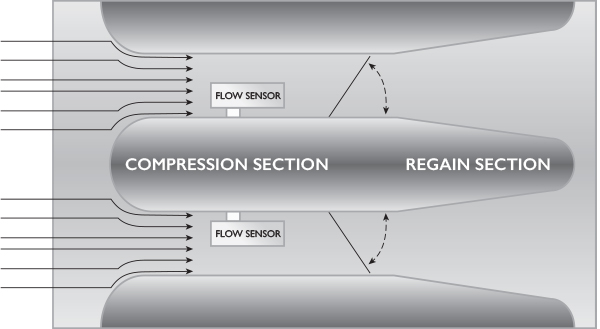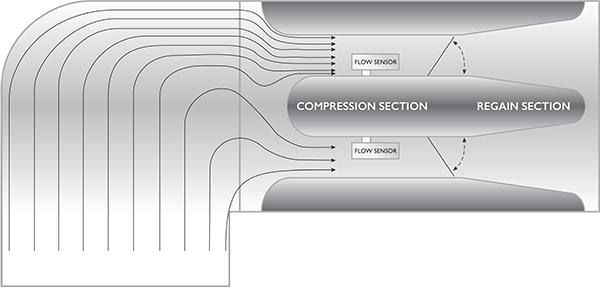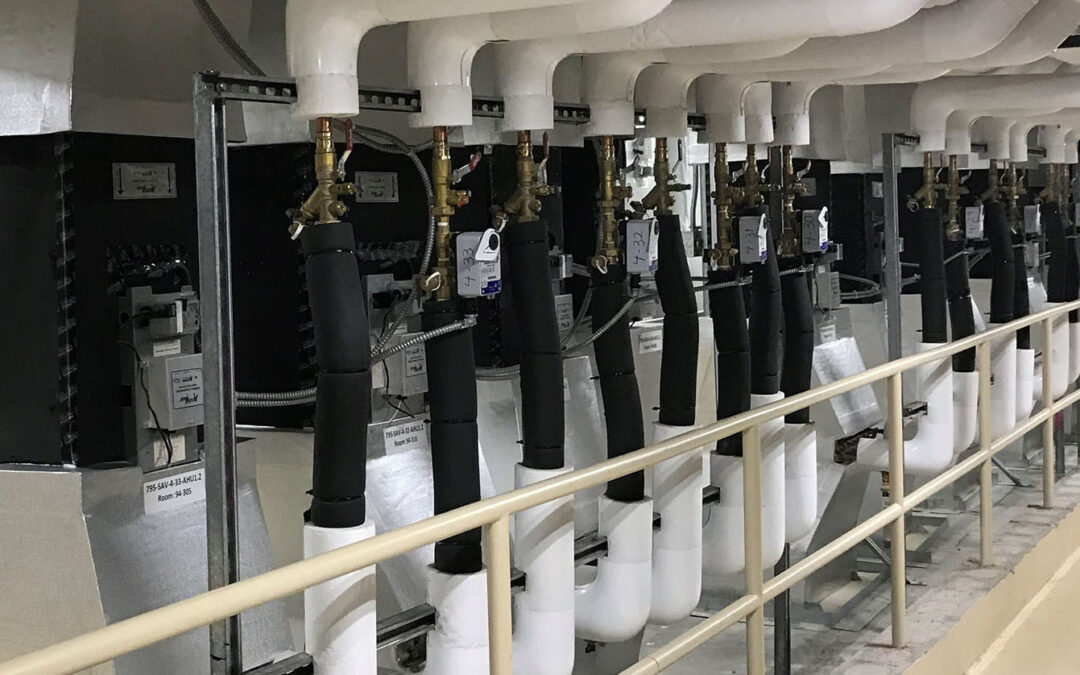Laboratory design standards have changed significantly over the years. But personnel safety hasn’t changed and continues to be the top priority in a lab space. As technology continues to improve at a rapid pace, design engineers are presented with new innovations that not only improve safety measures but also open the door to simplified solutions and energy-saving opportunities.
A Little History
Airflow control in labs and other critical applications requires precision. Lab design has shifted from energy-burning constant volume spaces to VAV designs thanks to fast-acting airflow control valves and fume hood face velocity control. Another improvement has been individual fume hood exhaust stacks which are being substituted for large, condensed, high-plume fan systems.
Many decades ago, the venturi airflow control valve provided the market with a device that delivered long-term stability and could properly maintain room pressurization. This valve has been the market standard for a long time due to its VAV capability and lack of adequate replacement.
In 2006, the AccuValve® was released and offered the industry an airflow control valve that brought a slew of significant improvements to the table. The AccuValve gave a building automation system (BAS) much greater transparency through highly accurate airflow measurement. It also simplified installation requirements (no need for straight runs or additional hardware), causing fewer headaches for installing contractors and engineers. But most importantly, the AccuValve offered much lower pressure drop at design airflows.
Low Pressure Drop
Airflow control devices inherently add pressure drop to a duct system. This pressure drop is incorporated into the lab airflow design and affects the static pressure the system needs to generate. Subsequently, this determines the amount of energy the system will use to operate properly. Ductwork design and low-pressure drop devices are keys to designing an energy-saving mechanical system.

AccuValve Compression and Regain
When sized based on differential pressure at maximum design CFM, an AccuValve system can be selected at 0.2″ wc of pressure drop across each valve. This low operating pressure drop is accomplished in the AccuValve by compressing the air to increase the velocity, thereby making the airstream more laminar. In addition, a static pressure regain section after the control blades further reduces the pressure drop of the valve. In comparison, venturi valves must operate well above their stated minimum pressure of 0.6″ or 0.3″ wc to ensure they are controlling properly.
The AccuValve does not rely on duct pressure to modulate and control airflow as a traditional venturi airflow control valve does. By directly measuring airflow for control, the AccuValve can achieve precise control while operating at very low pressure drops.
Demand Based Static Pressure Reset Control
The goal of Demand Based Static Pressure Reset Control is to operate the mechanical system at the minimum static pressure while allowing the controls to maintain a safe environment in the lab. The BAS monitors the position of each airflow control valve and determines which valves are most open (i.e., the largest control output). If the control output of the valves that are most open is below 80%, the BAS reduces the duct static pressure setpoint and then again looks at the position of each valve, determining the valve(s) that are most open. This continues until the most open valve is approximately 80% open, which ensures that the system is operating at the minimum pressure and that there is enough pressure in the system to allow the controls to operate, maintaining a safe lab environment.
It is worth noting that this control scheme cannot be used with a mechanical venturi-type airflow control valve without adding additional control devices. A venturi derives its pressure independence from a spring and plunger in the airstream. The spring and plunger combination is used to compensate for changes in static pressure in the duct. The shaft of the venturi valve is “commanded” to a position where it is calibrated for a given flow. The spring/plunger then compensates for static pressure changes in the system. Therefore, regardless of the static pressure in the duct (between 0.6″ and 3.0″), the valve will always be “commanded” to the same position for a given CFM. Control output or valve position is not indicative of the true position of the spring/plunger, so this signal cannot be used to reduce the duct static pressure.
The AccuValve provides “Ready” Demand Based Static Pressure Reset without the need for additional hardware. Since the AccuValve is not a mechanical device and actually measures airflow, the valve will modulate to whatever measured position that is required providing the desired airflow. If the static pressure in the system is high, it will modulate to a more closed position, and if the static pressure in the system is lower, it will modulate to a more open position. Since valve position is directly monitored, system static pressure can be reduced to the point where no Accuvalve is more open than 80%.
No Straight Runs Required, Mounting at Any Angle
Measuring duct airflow accurately depends on the airflow sensor having a uniform velocity profile, no matter what the airflow sensing technology. This requirement is often met with straight duct runs before and after the airflow sensor. However, tight HVAC spaces sometimes make this difficult or even impossible to implement.
The design of the AccuValve eliminates the need for straight duct runs before and after the valve. Its compression and regain sections condition the airflow by reducing turbulence and accelerating the air allowing for stable measurement and higher valve turndown. This is particularly important for labs and other critical environments where it is necessary to measure airflow accurately to meet safety requirements.

AccuValve with 90° Elbow at Inlet
Even with a 90° elbow at the inlet, the AccuValve can deliver laminar airflow allowing velocity to be accurately measured by the vortex shedding airflow sensors. The elimination of straight run requirements means simpler duct layouts and design, as well as cost savings. The AccuValve can also be mounted at any angle, unlike a venturi valve which must be ordered from the factory (and installed) in either a horizontal or vertical mounting arrangement. This is another benefit to the designer and installer when faced with tight HVAC spaces.
Energy Savings, Low Environmental Impact
The unique, award-winning design of the AccuValve delivers reduced operating costs and a lower environmental impact and carbon footprint. Saving energy is one of the most important issues in new building design and retrofitting today. Until renewable clean energy is readily available for all buildings around the world, individuals and companies will continue to focus on energy-saving methods. This focus and commitment are only growing more as time moves on and our environment becomes more damaged. Airflow control systems will continue to evolve with this trend, making options like AccuValve more appealing to building owners and engineers alike.
For further information about using AccuValve in your lab space, please call us at 203-261-8100 or email us.

















